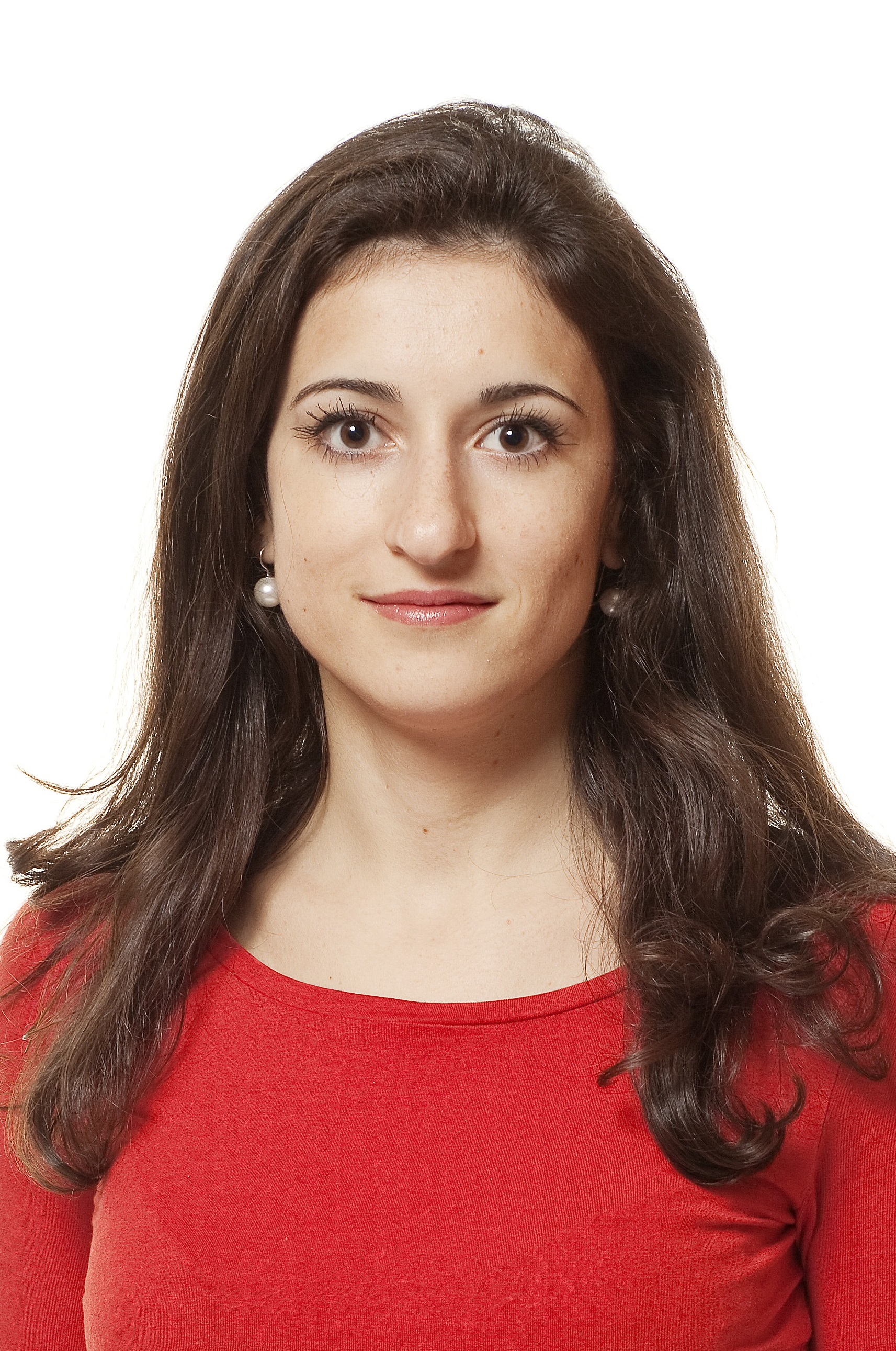Department of Finance
Placements
You can find the most recent placements of our job market and PhD candidates here. The list shows the first placement of the student after finishing the program and includes graduates from the year 2015 and onwards.
| 2023/2024 |
|---|
Donghyun Kang |
Kristoffer Halskov
Areas of Interest: Empirical Asset Pricing, Machine Learning, Climate Finance, Power Markets
PhD dissertation: Essays on Empirical Asset Pricing
This thesis explores the relationship between risk and return in financial markets through three independent chapters. The first chapter introduces a novel framework combining structural models and machine learning to enhance predictability and economic interpretability. The model outperforms benchmarks in predicting equity returns and (co)variances, highlighting the differing roles of systematic risk compensation and mispricing for expected equity returns. The second chapter demonstrates that machine learning models enhance the estimation of expected returns for merger arbitrage trades, improving both absolute and risk-adjusted returns. The final chapter analyzes the market for bonds tied to ESG targets. The findings reveal that investors pay a premium for these bonds, with yields 1-2 basis points lower, and that bond prices are strongly linked to potential penalties for missing ESG targets as basic financial theory would suggest.
Placement: Alipes Capital |
Alessandro Spina
Areas of interest: Monetary Policy, Financial Intermediation, Empirical Asset Pricing
PhD dissertation: Essays in Financial Markets and Beliefs
This thesis examines the information in asset prices and how macroeconomic expectations are formed. Chapter 1 finds there is unique information contained in the loan spreads of syndicated loans. This information can improve forecasts of economic conditions. Chapter 2 studies how information can be slow to spread within an asset class. I show information takes time to diffuse within the syndicated loan market. Finally, in Chapter 3 I expand my focus to study how agents form expectations of macroeconomic variables. All three chapters document new empirical facts that deepen our understanding of financial markets and belief formation.
Placement: University of Technology Sydney |
| 2022/2023 |
|---|
Andreas Brøgger
Areas of Interest: Sustainable Investing, ESG, Macro Finance, Asset Pricing, Corporate Finance
PhD dissertation: Financial Economics with Preferences and Frictions
This thesis explores how individuals’ preferences interact with frictions. Chapter 1 reveals that profit-seeking investors, driven by asymmetry in ESG mandates, invest in stocks with rising ESG ratings for higher returns. This contrasts with those having strong mandates, who are forced to own stocks with currently high ESG ratings. Chapter 2 explains in more detail how current ESG scores lead ESG-mandated investors to invest in stocks which go on to experience higher future emissions, rather than lower. As a solution, new assets called Emission Futures are introduced. Chapter 3 shows that the agency conflict between owners and managers of firms leads to increased demand for safe assets, such as treasuries, thereby raising their convenience yield.
Placement: Rotterdam School of Management |
Theis Ingerslev Jensen
Areas of Interest: Empirical asset pricing, subjective expectations, machine learning
PhD dissertation: Essays on Empirical Asset Pricing
This thesis studies the relationship between risk and return in the stock market. The first chapter finds that analysts expect to earn a much higher return from investing in risky stocks relative to safe ones, but, nevertheless, the realized return difference is close to zero. The second chapter asks whether there is a replication crisis in finance and finds that the papers we try to replicate are robust to changes in the original methodology, various statistical considerations, and can be replicated out-of-sample in stock markets around the world. The third chapter shows how to use machine learning to build a portfolio that optimally balances risk, return, and trading costs.
Placement: Yale School of Management |
Nicolai Søgaard Laursen
PhD dissertation: Longevity risk in reinsurance and equity markets
This thesis centers on systematic longevity risk, which refers to the uncertainty of future survival rates for a group of individuals. The first chapter evaluates how an annuity provider can reduce the variability of a life annuity most efficiently by engaging in a mortality-linked security via two alternative hedging strategies, with and without basis risk. We find that eliminating basis risk is more cost-effective. The second chapter shows that an increase in unsystematic mortality raises one-year ahead real returns heterogeneously for portfolios sorted by industry and dividend-price ratios in the U.S stock market. In the third chapter, I show theoretically and empirically how longevity risk may help explain the value premium.
Placement: Jyske Bank |
Jacek Piosik
PhD dissertation: Essays on Entrepreneurial Finance
This thesis investigates the role of human capital in the entrepreneurial economy through three empirical essays that leverage unique population data. Each chapter addresses a different research question, aiming to enhance our understanding of human traits that determine entrepreneurial outcomes and the expected impact of various policy measures. The first chapter explores the composition of skills in individuals' decisions to become entrepreneurs. The second chapter emphasizes the importance of accounting for human capital in self-selection into entrepreneurship when designing financial policies. The third chapter examines the impact of angel investors' human and social capital on value creation in the economy.
Placement: Venture Insights |
| 2021/2022 |
|---|
Jakob Ahm Sørensen
Areas of Interest: Empirical asset pricing, macro-finance and corporate finance.
PhD dissertation: Essays on financial markets with frictions and belief distortions
The three essays of this thesis examine the role of frictions and belief distortions as determinants of asset prices and macroeconomic outcomes. Specifically, the first two chapters investigate how extrapolative beliefs can lead to a mispricing of risky assets and predictable financial crises, as investors become overoptimistic about the future state of the economy. The third chapter studies how the stable funding structure of insurance companies can account for their investments in illiquid corporate bonds, and how the liquidity premium on these corporate bonds in turn affect the pricing of insurance policies.
Placement: Bocconi University |
Nicola Giommetti
Areas of Interest: asset pricing, valuation, and portfolio allocation with illiquid assets.
PhD dissertation: Essays on Private Equity
This thesis studies private equity funds from an investor’s perspective. Private equity funds are illiquid investments with unobservable market returns, and I investigate how to estimate their historical risk-adjusted performance based on cash flows, and how to optimally allocate capital between private equity funds and publicly traded assets.
Placement: Not Announced |
Kirsten Tangaa Nielsen
The thesis consists of three essays investigating the importance of central corporate persons by examining the value contribution of CEOs and corporate directors to shareholders in publicly listed firms. Existing research has already established that these individuals demonstrate vast heterogeneity in terms of their abilities and characteristics, which in turn has been shown to lead to substantial cross-sectional variation in the value and performance of the firms they operate. Therefore, identifying the key characteristics of central corporate persons that drive shareholder value are of great interest to investors and corporate boards for succession planning purposes.
|
Søren Bundgaard Brøgger
PhD dissertation: Essays on Modern Derivatives Markets I investigate the feedback effects that can arise when hedging flows from derivatives markets are large relative to the underlying market. I find that flows are efficiently absorbed when the underlying market is liquid (first chapter), but can distort the dynamics of the underlying asset(s) if not (second chapter). In the final chapter (with Jesper Andreasen), we show what happens to the value of cash if the zero lower bound on nominal rates is removed.
|
Alexander Kronies
This thesis concerns alternative investments in equity and energy markets. The first chapter (with Andreas Brøgger) documents that only some investors with skill earn high returns when investing sustainably. In the second chapter, I provide evidence that large wind turbines outperform their smaller peers as they yield higher cash flows per production unit. Finally, chapter three shows that the allocation of private capital to renewable energy projects is largely driven by subsidy structures and very specific risk exposures.
|
Rasmus Jørgensen
PhD dissertation: Essays on Empirical Asset Pricing and Private Equity
The thesis applies methods from empirical asset pricing to study the payoffs of non-traded
Placement: ATP |
Rikke Sejer Nielsen
Areas of Interest: Household Finance
PhD dissertation: Mortgage Decisions of Households: Consequences for Consumption and Savings
The mortgage decision is typically the most important financial decision of a household, as housing
Placement: Syddansk Universitet |
| 2020/2021 |
|---|
Benjamin Knox
Areas of Interest: Asset Pricing, Insurance, Financial Intermediaries, FinTech, Monetary Policy
PhD dissertation: Essays on Financial Markets and Monetary Policy
This thesis concerns financial markets and monetary policy. It consists of three chapters on the topics of insurance pricing, asset pricing and the economic effects of monetary policy respectively. I find that insurance companies set the price of insurance contracts lower when their expected investment returns are higher (chapter one: with Jakob Ahm Sørensen), decompose stock returns into cashflow news and discount news using a novel method based on observables (chapter two: with Annette Vissing-Jorgensen) and identify the causal effect of US monetary policy on unemployment rates using GIV methods (chapter three).
Placement: Federal Reserve Board in Washington |
Julie Marx
PhD dissertation: Households in the housing market
Housing typically is the largest household asset and decisions in the housing market significantly impacts wealth, welfare, and opportunities of households. This PhD thesis uses Danish register data to study household decision-making, in particular in the housing market. The thesis covers the full circle of homeownership: buying, selling, and relocation, as well as the topics of negotiation, reference dependence, household heterogeneity, and education.
Placement: Copenhagen Business School |
| 2019/2020 |
|---|
Thomas Kjær Poulsen
Areas of Interest: Asset pricing, Corporate Finance, Financial Economics
PhD dissertation: Essays on Asset Pricing with Financial Frictions
The thesis consists of three self-contained essays, which study how financial frictions influence the pricing of equities, corporate bonds, and transaction costs. The first essay analyzes how risks related to firms’ debt structures explain a substantial fraction of the investment premium. The second essay investigates why debt dispersion affects yield spreads on corporate bonds. The third essay examines the cross-section of bid-ask spreads in the corporate bond market.
Placement: BI Norwegian Business School |
Benjamin Christoffersen
PhD dissertation: Corporate Default Models: Empirical Evidence and Methodological Contributions
Modelling the joint distribution of defaults is a key part of bottom-up models for the loss of a corporate debt portfolio. Two of the chapters in the thesis concerns default models to account for time-varying unobservable effects and how to estimate these models. The other two chapters are applications of such models.
Placement: KTH Royal Institute of Technology |
Frederik Ørnsholt Regli
PhD dissertation: Essays on Crude Oil Tanker Markets
This thesis studies freight rates, which have sparked the interest of maritime economists at least since the seminal work by Tinbergen (1931) and Koopmans (1939). This thesis has special emphasis on how freight rates evolve, how they are linked to oil prices through the floating storage arbitrage relationship, and how they reflect the relative bargaining power of shipowners and charterers. The thesis consists of three chapters, which can be read independently.
Placement: Ørsted |
| 2018/2019 |
|---|
Stine Louise Daetz
|
Niels Joachim Gormsen
The thesis concerns the empirical relation between risk and return in equities. It studies why the expected return on stocks as a whole varies over time and why there are predictable cross-sectional differences in the return on individual stocks. The thesis consists of three chapters which can be read independently.
|
Christian Skov Jensen
PhD dissertation: Essays on Asset Pricing
The thesis consists of three self-contained essays. The first essay investigates when it possible to decompose investor preferences and beliefs directly from observable option prices written on the market. The second essay investigates how financial market tail risk varies over time and studies possible economic drivers of time varying financial market tail risk. The third essay investigates how the preferences of financial market participants vary over time. |
Andreas Bang Nielsen
Areas of Interest: Credit Risk, Foreign Exchange, Derivatives, Empirical Asset Pricing PhD dissertation: Essays on Foreign Exchange and Credit Risk
|
Pia Mølgaard
PhD dissertation: Essays on Corporate Loans and Credit Risk
The thesis consists of three self-contained essays. The first essay investigates the trading pattern of managers of collateralized loan obligations (CLO) and how it affects the performance of the CLO. The second essay investigates how post issuance ratings and prices of corporate loans depends on the relationship the firm has with its bank connection. The third essay investigates how microstructural noise components in asset prices affect test results of the lead-lag relationship between corporate bond and CDS spreads.
Placement: Danmarks Nationalbank |
|
2017/2018 |
|---|
Sven Klingler Areas of Interest: Asset Pricing, Financial Frictions, Hedge Funds, Limits of Arbitrage
PhD dissertation: Essays on Asset Pricing with Financial Frictions
The common theme of this thesis, which consists of three essays, is the effect of funding frictions on asset prices. The first essay (co-authored with David Lando) shows how financial regulation creates a demand for credit default swap (CDS) contracts on safe sovereigns. The second essay (co-authored with Suresh Sundaresan) provides evidence that underfunded pension plans, which face funding constraints because they are restricted from using direct leverage, have a demand for long-dated interest rate swaps. The third essay uses deviations from the covered interest rate parity (CIP) as a proxy for market-wide funding conditions and shows that hedge funds with higher exposure to that risk underperform funds with lower exposure.
Placement: BI Norwegian Business School
|
Davide Tomio Areas of Interest: Market Microstructure, Asset Pricing, Empirical Finance
PhD dissertation: Essays on Arbitrage and Market Liquidity
This dissertation consists of three essays aimed at understanding what drives market liquidity and the mispricing between securities connected by arbitrage. The first sets the stage by investigating how credit risk affects bond market liquidity. The second essays considers the market liquidity of an asset together with that of a second asset, to which the first is connected by an arbitrage relationship. The third essay considers how the liquidity spills over between two securities connected by arbitrage, focusing on the propagation of a liquidity shock and show how a large buying pressure exerted by an exceptional trader (a central bank) affects the pricing relation between two securities and how the illiquidity arising in one market is transferred to the other.
|
Niklas Kohl
PhD dissertation: Essays on Stock Issuance
Firms which issue new equity subsequently have lower returns than other firms. The essays explore whether the strength of this effect depends on differences in issuer characteristics, and between issuers in different markets. Moreover, I investigate whether issuer underperformance can be explained by information asymmetry.
Placement: Selandia Capital |
Nina Lange
PhD dissertation: Correlation in Energy Markets |
| 2016/2017 |
|---|
Kay Sun Park Areas of Interest: Empirical and Theoretical Corporate Finance, International Finance
PhD dissertation: Three Essays on Financial Economics This thesis investigates the question of how the fluctuations of funding and liquidity conditions affect the financial decision of the firm.
Placement: Research Fellow at Incheon Development Institute in South Korea
|
Aleksandra Rzeźnik Areas of Interest: Empirical Asset Pricing, Liquidity, Institutional Investors, Real Estate
PhD dissertation: Essays in Empirical Asset Pricing
The thesis consists of three essays investigating financial and real estate markets and identifying a relationship between them. A 2008 financial crises provides a perfect example of sizeable interactions between US housing market and equity prices, where a negative shock to house prices triggered a word-wide recession. Therefore, understanding forces driving investors behaviour and preferences, which in turn aff ect asset prices in both equity and housing market are of great interest.
Placement: Assistant professor at WU Vienna University of Economics and Business in Austria
|
Desi Volker Areas of Interest: Financial economics, Macro-finance, Empirical asset pricing, Monetary economics, Fixed income
PhD dissertation: Understanding Interest Rate Volatility
The thesis consists of three essays covering topics related to the term structure of interest rates, monetary policy and interest rate volatility. The common thread in the themes covered is the understanding of interest rate volatility, its time-variation and main determinants. The first essay examines the role of monetary policy uncertainty on the term structure of interest rates. The second essay investigates the ability of the class of regime switching models with and without stochastic volatility to capture the main stylized features of US interest rates. While the third essay investigates the time-series and cross-sectional properties of the compensation demanded for holding interest rate variance risk.
Placement: Federal Reserve Bank of New York
|
Søren Korsgaard
PhD dissertation: Payments and Central Bank Policy
The thesis consists of three chapters. The first chapter examines the market for retail payments, specifically the role of interchange fees in payment card networks. The second chapter looks at how banks' liquidity shape outcomes in the money market. Finally, the third chapter explores how central banks use collateral policy to support lending
Placement: Danmarks Nationalbank |
Mads Vestergaard Jensen
PhD dissertation: Financial Frictions - Implications for Early Option Exercise and Realized Volatility
The first chapter (with Lasse Heje Pedersen) shows that the classic rule that one should never exercise a call option early breaks down when frictions are severe enough. The second chapter documents that underlying stocks underperform after early exercise, consistent with private information leading to early exercise. The final chapter (with Christian Skov Jensen) finds that, consistent with an increase in differences of opinion, a positive demand shift for shorting a stock predicts higher volatility for the affected stock.
Placement: Danica Pension |
Mikael Reimer Jensen
PhD dissertation: Interbank Markets and Frictions
The thesis consists of three chapters. The first chapter examines how banks’ liquidity position shapes outcomes in the money market. The second chapter investigates the decomposition of interbank rates into credit and liquidity risk. Finally, the third chapter explores how the classical no-arbitrage pricing framework can be extended by assuming that the underlying asset can be used in a repo transaction.
Placement: ATP |
| 2015/2016 |
|---|
Mamdouh Medhat
Areas of Interest: Asset pricing, Asset pricing implications of corporate finance theory, Credit risk
PhD dissertation: Measuring and Pricing the Risk of Corporate Failures.
This PhD dissertation consists of three chapters. The first presents an additive regression framework that allows the estimation and analysis of time-varying effects on default probabilities. The second studies the validity of an assumption in the Basel accords stating that the default probabilities of smaller firms are less cyclical. The third argues that firms' cash holdings can help rationalize the low returns to distressed equity.
Placement: Cass Business School London |
Sebastian Fux
PhD dissertation: Essays on Return Predictability and Term Structure Modelling
The thesis consists of three essays covering the topics of return predictability and term structure modelling. Each of the three essays is self-contained and can be read independently. The first two essays of the thesis are about return predictability. The second essay covers the predictability of exchange rates. The final essay is about term structure models where we develop a regime-switching Affine Term Structure Model with a stochastic volatility feature.
Placement: PWC, Zürich |






























